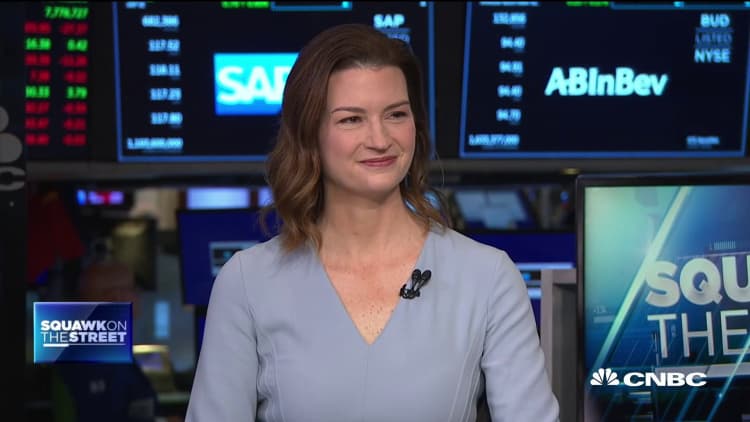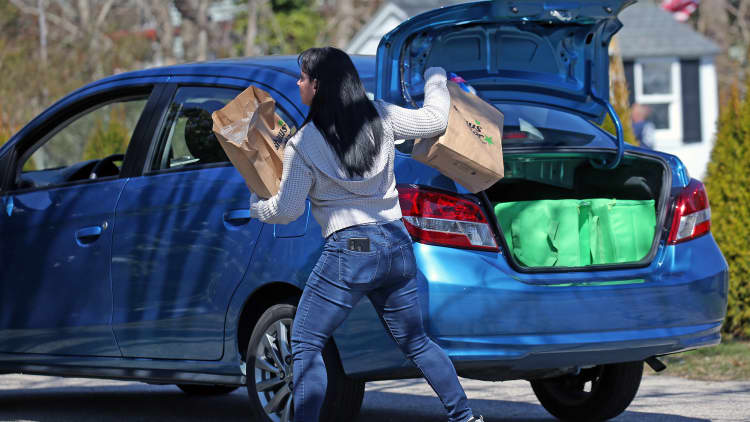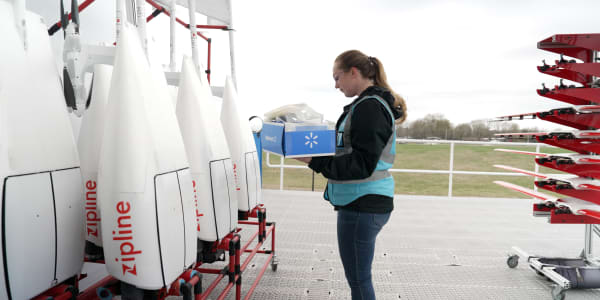Blue Apron has been on a roller-coaster ride ever since going public in 2017. The meal-kit delivery company's stock first flirted with a potential delisting in 2018 when it fell below $1, and it was back around $2 in March right as the stock market bottomed. Earlier this year it was reported that a number of options were being considered just to stay alive, including private ownership or even sale of the company.
By the end of the fourth quarter 2019, the company had just over 350,000 customers — a 9% drop from the previous quarter. Blue Apron CEO Linda Findley Kozlowski acknowledged "strategic alternatives" the company has considered since she assumed the role of CEO in April 2019. But since then, the world has been rocked by Covid-19 and the economic repercussions.
Negative as many of those repercussions have been, state governments enforced shelter-in-place restrictions throughout the pandemic that have made delivery companies like Blue Apron an essential service in the coronavirus economy. According to Nielsen data, U.S. customers spent around $100 million on meal kits for the month ending April 11, which is nearly double the sales during the same period in 2019.
Blue Apron's growth has been limited compared to competitors, like Berlin-based HelloFresh, which had U.S. sales of $450 million in the first quarter, while also doubling its U.S. customer base and increasing revenue by 66% year-over-year. Still, Blue Apron added 200,000 customers in Q1 — a step in the right direction for a company that not long ago found itself on life support.
Amid shelter-in-place orders, Blue Apron's stock was up 400% from mid-March to mid-April giving some investors hope that restaurant closures could revive a company that was valued at almost $2 billion around the time of their 2017 IPO. For Kozlowski, it's momentum to build on despite a mixed earnings report that showed net revenue decrease year-over-year, but increase quarter-over-quarter.
The former Etsy COO says that she was brought on just over a year ago to help the company return to growth, which began with a strategy she laid out in August 2019, and is now being accelerated due to Covid-19. Executing that strategy has meant an effort to reach new client segments with marketing campaigns targeting singles and empty nesters, versus strictly the couples and young families that are the core customers from Blue Apron's initial growth period. "Prior to my time, there was not as much capital available to invest in marketing," Kozlowski said.
In the first quarter of 2020, marketing expenditure accounted for just under 15% of Blue Apron's net revenue, up from 10% in the first quarter of 2019. For historical comparison, marketing accounted for almost 25% of net revenue in the first three months of 2017, before Blue Apron went public.
Investment in marketing was also the core reason the company began looking into "strategic alternatives" at the beginning of 2020. But "we never said 'sell the company,'" according to Kozlowski, referring to a Reuters' report from February. "We said a broad range of things were a possibility, and specifically, [the options being considered] was to provide the ability to invest in marketing on top of the product initiatives that we were doing to achieve the second half of our growth plans."

That marketing spend also has faced pressure from the unexpected coronavirus surge.
"While marketing remains an essential part of our business, we have slowed and adjusted our marketing spend based on the heightened demand we've been seeing. We have temporarily shifted some of our marketing dollars to ramping up production and engaging our existing customers with content, social engagement and support for staying at home," Blue Apron noted during its recent earnings call.
Blue Apron is hiring more temporary staff for its fulfillment centers and reducing the variety of recipes on offer so they can handle more orders. The moment is ripe for big moves to cement industry dominance.
Uber's reported bid for Grubhub speaks to the broader push to consolidate delivery models at the time, and as gains are accruing for some companies quicker than others during the pandemic. Restaurant delivery has seen the third-highest growth of online orders behind electronics and groceries, according to Earnest Research.
According to the data, Blue Apron trails DoorDash, Grubhub, Uber Eats, Postmates and HelloFresh. DoorDash, in particular, has used the crisis to gain an ever greater position of dominance in meal delivery. Meanwhile, Instacart has surged in the online grocery category.

Kozlowski admits there's a high cost to marketing in the $1.5 billion meal-kit delivery space. The market saturation presents challenges to surviving under any circumstances — especially for young companies, whether private or unprofitably public.
In November 2019 Plated, another industry leader, pivoted from offering meal-kit delivery services to selling its meals in local grocery stores in an effort to differentiate. And for some of these challenged businesses, a new threat has emerged in the form of incumbent grocers and chain restaurants offering meal-kit delivery alternatives, such as Panera Bread's salad and sandwich kits, Chick-fil-A's chicken dinner kits and Shake Shack's burger kits, all of which have been introduced in response to lagging sales amid the pandemic.
Blue Apron's financial outlook
In a recent meal-kit sector analysis, Deutsche Bank noted that Blue Apron now expects Q2 revenue to be up in the "high single digits" to $130 million and that would make "the first quarter of growth for the company since its operational issues began in mid-2017."
The 25,000 active customers it added in Q1 were its first net positive growth in that metric in two years, according to Canaccord Genuity, due to Covid-19 demand. "There is increasing demand from recurring customers who are ordering more frequently and incremental demand from new customers who are looking at the category as an alternative way to source and secure meals. ... We expect growth to persist," the Deutsche Bank's analyst team covering the meal-kit sector wrote.
Blue Apron's first-quarter performance was encouraging to Kozlowski, because she said it was not primarily driven by the coronavirus delivery surge. "I wanted to understand [whether or not] we hit our quarter-over-quarter customer and revenue growth in Q1 with our plan or with Covid. And for us it was with our plan, which is important to me when I think about longer-term planning."
During the first three weeks of April, demand increased 27% over March for Blue Apron. Blue Apron is expecting net sales to grow year-over-year in the second quarter. "Different people saw different impacts of Covid at different times, but we started seeing interest in the product at the very end of Q1," Kozlowski said, adding that Q2 is expected to be the most significant sales impact period.






